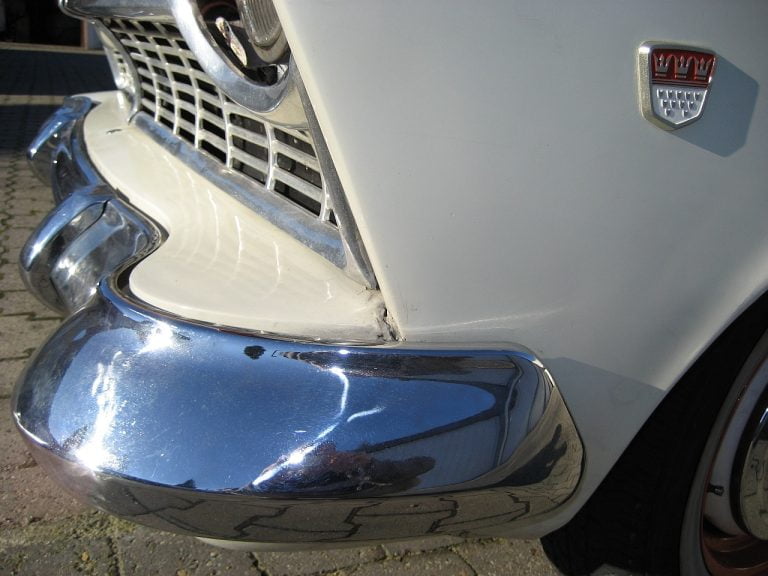Does a FrontWheel Drive Vehicle Require a Differential?
Have you ever wondered what exactly goes on inside a car that allows it to smoothly navigate corners without skidding?
Well, one key component that often goes unnoticed is the differential.
But here’s the twist – does a front-wheel drive car have a differential?
Let’s dive into this mechanical mystery and explore the role of differentials in our vehicles.
Buckle up, because we’re about to unravel some fascinating automotive secrets!
does a fwd car have a differential
Yes, a front-wheel drive (FWD) car does have a differential.
The differential is responsible for allowing the front wheels to rotate at different speeds during turns, while still transmitting power from the engine to the wheels.
Key Points:
- A front-wheel drive (FWD) car has a differential.
- The differential enables the front wheels to rotate at different speeds during turns.
- The differential is responsible for transmitting power from the engine to the wheels.
- It allows for smooth and controlled turning.
- Without the differential, the front wheels would have to rotate at the same speed, hindering maneuverability.
- The differential is a vital component in FWD cars for maintaining stability and performance.
Check this out:
💡 Did You Know?
1. With very few exceptions, most front-wheel drive (FWD) cars do have a differential. The differential is responsible for distributing power between the two front wheels, allowing the inside wheel to rotate slower than the outside wheel during turns. This enables smooth cornering and prevents wheel scrubbing.
2. The architecture of a typical FWD car places the differential in the transaxle assembly, which combines the transmission and the differential into a single unit. This design provides significant space-saving advantages and allows for better weight distribution.
3. Unlike rear-wheel drive (RWD) cars, where the differential is located in the rear axle, FWD cars have their differential integrated into the front axle assembly. This configuration contributes to better traction and stability, especially in slippery conditions, as the weight of the engine rests directly over the front wheels.
4. Some high-performance FWD cars employ advanced differential systems such as limited-slip differentials (LSD) or electronic differentials. LSDs distribute power more evenly between the front wheels, improving traction and control. Electronic differentials use advanced sensor and computer systems to actively manage power distribution, optimizing performance and handling.
5. Interestingly, there are certain types of FWD cars that don’t have a traditional differential at all. This is the case in some electric vehicles (EVs) that adopt a “single-speed” transmission, where the electric motor directly controls the power sent to each wheel. In these cars, the motor’s electronics regulate torque delivery and wheel rotation speed, effectively replacing the mechanical differential.
Oil Changes Alone May Not Be Enough For Front Or Rear Differential Servicing
When it comes to vehicle maintenance, many owners focus solely on oil changes and overlook other crucial components. One such component is the differential, responsible for distributing power to the wheels of a car. While it is commonly assumed that only rear-wheel drive vehicles have differentials, front-wheel drive cars also have them. However, the servicing requirements for front-wheel drive differentials may differ from those of rear-wheel drive vehicles.
If your front-wheel drive vehicle is only serviced with oil changes at the recommended intervals, it is important to pay extra attention to checking the front or rear differential fluid more frequently. Unlike rear-wheel drive vehicles where the differential fluid can be serviced and changed separately, most front-wheel drive differentials are integrated with the transmission and share the same fluid. Therefore, neglecting differential fluid checks can have significant consequences, including damage to the differential unit and even total failure.
- It is important to check the front or rear differential fluid more frequently for front-wheel drive vehicles.
- Neglecting differential fluid checks can lead to significant consequences, including damage to the differential unit and even total failure.
Hard Driving Accelerates Differential Fluid Deterioration
The way you drive can greatly affect the condition of your differential fluid. Aggressive driving, such as hard acceleration and abrupt braking, puts excessive stress on the differential and causes the fluid to break down more quickly. As the fluid deteriorates, its ability to lubricate the differential components diminishes, increasing the risk of excessive wear and potential damage. To mitigate this issue, it is essential to check the differential fluid more frequently, especially if you tend to drive aggressively.
Heavy Towing Necessitates More Frequent Differential Fluid Checks
If you frequently tow a boat, caravan, or trailer with your front-wheel drive vehicle, paying extra attention to the condition of the differential fluid is crucial. Towing puts additional strain on the differential, leading to increased heat and stress. These factors can accelerate the breakdown of the fluid, reducing its effectiveness in lubricating the differential’s moving parts.
To ensure optimal performance, it is advisable to check the differential fluid more frequently than the standard maintenance intervals.
Improvements:
- Emphasized the importance of paying attention to the differential fluid condition
- Highlighted the accelerated breakdown of the fluid due to towing activities
- Emphasized the need for frequent checks of the differential fluid when towing
- Added bullet points to improve readability and organize information better.
Submerging Rear Axle In Water Requires More Frequent Checks
Launching a boat from a boat ramp often requires partially submerging the rear axle of the vehicle. This is especially important to consider for front-wheel drive vehicles, as the differential is located near the front of the car. Submerging the rear axle increases the risk of water contamination in the differential fluid. Water can cause rust, corrosion, and damage to the differential components. Therefore, it is crucial to regularly check the differential fluid if you frequently launch your boat from a ramp or engage in any activities that involve submerging the rear axle of your front-wheel drive vehicle.
Extreme Conditions Like Snow Call For Extra Attention To Differential Fluid
Driving in severe conditions, such as snow, can significantly impact the condition of the differential fluid. The extreme temperatures and demanding driving conditions associated with snowy environments can cause the fluid to break down at a faster rate. Additionally, the differential is put under increased stress when driving on slippery surfaces and navigating through snow-covered roads.
Therefore, it is essential to:
- Check the differential fluid more frequently when driving in extreme conditions to ensure optimal performance and prevent potential damage.
Driving in snow can put extra strain on your vehicle’s differential fluid. It is important to check it regularly to ensure it is in proper condition.
Rough And Wet Off-Road Terrain Demands Regular Checks
Off-road enthusiasts who enjoy traversing rough or wet terrain must consider checking the differential fluid more frequently. The challenging conditions encountered during off-roading adventures subject the differential to increased stress and the potential for water and debris contamination. Without regular checks and maintenance, the differential fluid may lose its ability to protect the differential’s internal components, potentially leading to costly repairs or even failure. Hence, off-road enthusiasts should prioritize regular inspections and fluid changes to ensure optimal performance and longevity of their front-wheel drive vehicle’s differential.
Common Differential Problems: Noise And Leaks
Two common problems that can arise in a differential are noise and leaks.
Noise issues can manifest as grinding gears and growling sounds when the differential is not properly lubricated or if the fluid has deteriorated significantly. These noises indicate that the differential components are not receiving adequate protection, which can potentially lead to severe damage if left unaddressed.
Similarly, leaks in the differential can cause growling noises and a host of other issues. A leaking differential may result in a reduction of fluid levels, leading to insufficient lubrication and increased friction. The growling noise may indicate severe damage to the differential and should not be ignored.
- Grinding gears and growling sounds can be indicative of noise issues in a differential.
- Inadequate lubrication and deteriorated fluid can contribute to these noise problems.
- Leaks in the differential can cause growling noises and other complications.
- Insufficient lubrication due to fluid reduction can lead to increased friction and potential damage.
Failure to address noise and leakage problems in a differential could result in severe damage and higher repair costs.
Seek Professional Help For Oil Leak Investigations
If you suspect any oil leaks in your front-wheel drive vehicle’s differential, it is essential to have them investigated by a qualified professional. Oil leaks can have various causes, and a professional mechanic can accurately diagnose and repair the issue. Ignoring an oil leak can lead to more significant problems, including complete differential failure, which can be both dangerous and costly.
Factors to consider for differential maintenance in front-wheel drive vehicles include:
- Differential fluid checks: It is necessary to check the differential fluid more frequently if servicing is limited to oil changes at recommended intervals.
- Driving conditions: Factors such as hard driving, towing, water submersion, extreme conditions, and off-road adventures demand more frequent differential fluid checks to ensure the optimal performance and longevity of the front-wheel drive vehicle’s differential.
- Prompt addressing of common problems: Issues such as noise and leaks should be promptly addressed to prevent further damage.
- Professional investigation of oil leaks: Any oil leaks should be professionally investigated to prevent further damage.
Regular maintenance and attention to the differential are vital for a smooth and reliable driving experience.
FAQ
Why is there no differential in a FWD?
Unlike rear-wheel drive vehicles where the wheels are connected by an axle, front-wheel drive vehicles lack a traditional differential due to their different design. In a front-wheel drive setup, each wheel operates independently on bearings, enabling them to rotate freely and adapt to varying road conditions. As a result, there is no need for a differential as seen in rear-wheel drive vehicles, which distributes torque among the wheels when they rotate at different speeds. The absence of a differential in front-wheel drive vehicles contributes to their compact design, increased fuel efficiency, and improved maneuverability, making them a popular choice for many drivers.
Does a FWD have a rear differential?
Yes, a front-wheel drive (FWD) vehicle does not have a rear differential. The differential system of an FWD car is designed to distribute power to the front wheels, utilizing a front differential. Unlike all-wheel drive or four-wheel drive vehicles, FWD cars do not require a rear differential as the power is transmitted solely to the front wheels.
Do FWD cars have differential fluid?
Yes, front-wheel drive (FWD) cars do have differential fluid, though it is typically not separate from the transmission fluid. In FWD vehicles, the differential is usually integrated into the transmission or transaxle, meaning that it shares the same fluid for lubrication and cooling purposes. This design allows for a more compact and efficient system, as the transmission fluid performs both functions simultaneously. Therefore, in FWD cars, maintaining the transmission fluid also ensures proper lubrication and functioning of the differential.
How many differentials are there in front-wheel drive?
In front-wheel drive vehicles, there is typically only one differential, located at the front of the car. This differential allows the two front wheels to rotate at different speeds when necessary, such as during turns, ensuring better maneuverability. Unlike rear-wheel or four-wheel drive cars, which have differentials at both ends, the design of front-wheel drive systems requires only a single differential at the front to distribute power to the wheels effectively.



